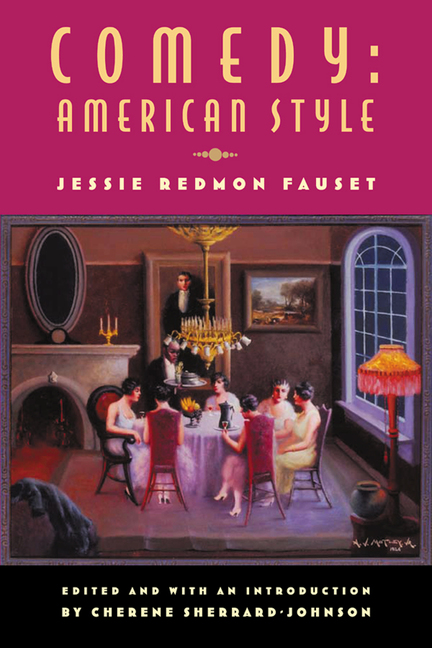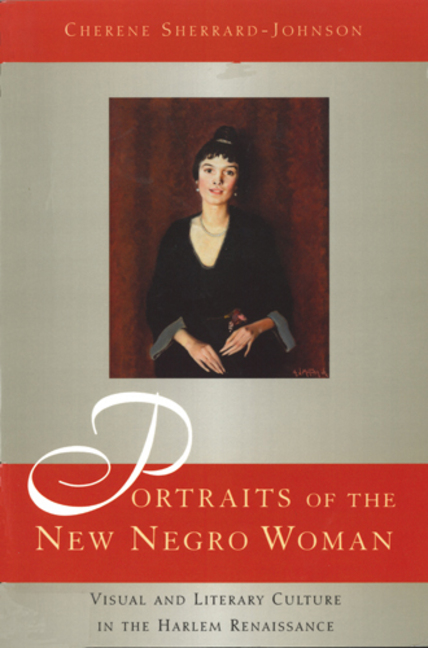“A Plea for Color”: Nella Larsen’s Iconography of the MulattaPosted in Articles, Literary/Artistic Criticism, Media Archive, Passing, United States on 2015-02-08 19:13Z by Steven |
“A Plea for Color”: Nella Larsen’s Iconography of the Mulatta
American Literature
Volume 76, Number 4, December 2004
pages 833-869
Cherene Sherrard-Johnson, Professor of English
University of Wisconsin, Madison
The Negro poet portrays our group in poems, the Negro musician portrays our group in jazz, the Negro actor portrays our group generally with a touch of hilarity. . . . So why should the Negro painter, the Negro sculptor mimic that which the white man is doing, when he has such an enormous colossal field practically all his own; portraying his people, historically, dramatically, hilariously, but honestly.
—Archibald J. Motley Jr., “The Negro in Art”
While the name Archibald Motley brings instant recognition only to specialized scholars, two of Motley’s paintings are so well known that they have become, for many, visual embodiments of the Harlem Renaissance. Motley’s The Octoroon Girl (1925) and Blues (1929) have served as cover art for several editions of Harlem Renaissance literature, anthologies, and literary criticism. Blues, with its colorful, energetic composition incorporating the era’s insignia—jazz, the speakeasy, and interracialism—bespeaks musical innovation and artistic intellectualism. And the recurrent appearance of The Octoroon Girl, especially on the cover of women’s fiction, continues to reproduce its subject—the mulatta—as a predominant referent in the visual culture, art, and literature of the Harlem Renaissance era.
The Octoroon Girl, which Motley considered the best of his paintings, is the second of a series in which he uses color and composition to explore miscegenation. Motley claimed to be “sincerely interested in pigmentation of the skin in regard to the lightest type of colored person . . . consisting of one-eighth Negro blood and seven-eighths caucasian blood.” In this painting, he depicts a light-skinned, dark-haired, dark-eyed woman with high cheekbones, an aquiline nose, and rose-colored, pursed lips (see fig. 1). Sitting comfortably on a tapestry-like couch, one arm resting on a small table with two books and a moustached figurine, she is not perfectly centered in the portrait but situated slightly to the right, her head counterbalanced by a gold-framed landscape hanging on the wall. The dramatic contrast of dark and light forms a rich backdrop for the portrait of this clearly modern woman and her penetrating gaze. Her stylish clothing, gloves, and finely drawn, tapered hands indicate her middle-class status, while her frontal position and serious expression lend a dignity that Motley consistently conveys in his portraits. The only fracture in this otherwise graceful composition is the laughing figurine at her elbow. This mocking figure, resembling a clown, undermines the sitter’s poise and subtly disturbs the dignity of the design. The figurine reminds the viewer that the portrait is an image projected by the artist and draws attention to the artificiality in modern realist painting. Placed precisely to illuminate some otherwise hidden aspect of the sitter’s character, the laughing figure suggests there is something more to the sitter than Motley’s title, which directs the viewer’s reading of the painting as an “octoroon girl.” In serving as cover art for novels that thematize racial indeterminacy, this portrait gestures at a collective, visually inflected understanding of the aestheticized markers that created the mulatta, or passing, subject in African American literary and visual culture: physiognomy, exoticism, and the mysterious gaze.
Along with Motley’s haunting octoroon series, a preponderance of photography, visual art, and narrative texts produced during the Harlem Renaissance featured the mulatta as either heroine or primary subject, reinforcing her role as the representative New Negro woman. While the New Negro man was called upon to be an inventor, innovator, and artist, the New Negro woman appeared in roles that emphasized service and self-sacrifice, such as teachers, nurses, and librarians. These popular images of the New Negro woman enforced a genteel standard of behavior, appearance, and vocation that restricted real women’s agency and artistic expression—and ran counter to the modernizing impulse of the era. On the other hand, the image of the mulatta was frequently collapsed into the stereotype of the Jezebel. Motley’s painting A Mulatress…

